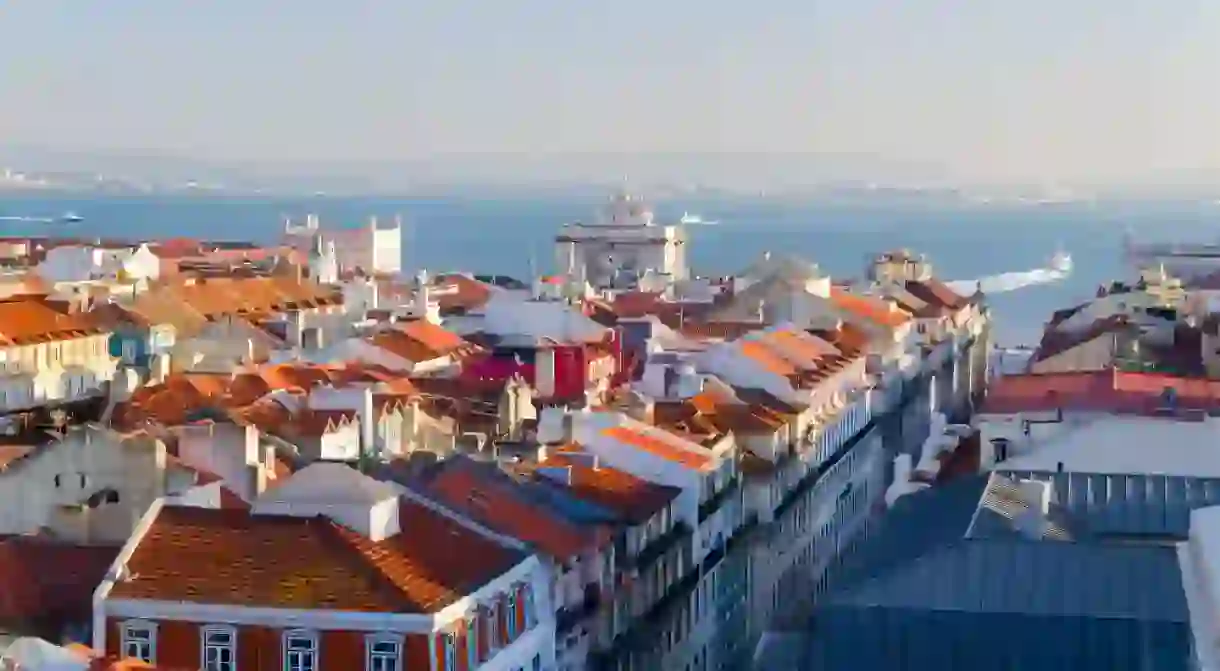The Best Destinations for a Winter Break in Portugal

With more than 300 sunny days each year and a mild climate all year round, Portugal is one of the most popular winter-sun destinations in Europe. But a trip to the Iberian Peninsula isn’t just to escape the cold – visitors also come to spend time in its historic cities without the crowds. Here are a few of our favourites.
Tavira
Natural Feature

This charming coastal town is located on the Algarve’s quieter eastern coastline. Tavira Island, a few hundred metres off the coast, boasts an 11km (6.8mi) long sandy beach. With winter temperatures ranging from 13C (55F) to 8C (46F), it might be a bit too chilly for sunbathing but it’s the ideal weather for a stroll along the water’s edge. There’s plenty more natural wonders to explore too. The Gilão River runs runs from here to the Ria Formosa Natural Park with its salt pans and spectacular birdlife which includes flamingos and spoonbills.
Lagos
Natural Feature

Characterised by its walled old town and dramatic cliff formations, Lagos is one of the most popular destinations in the Algarve region. In summer, it’s overflowing with tourists but winter is an ideal time to wrap up and explore the cliffs of Ponta de Piedade, the sandy cove of Praia do Camilo and the historic Igreja de Santo Antônio church and Castelo dos Governadores. There are numerous golf courses in the area including the Boavista Golf & Spa Resort, with an 18-hole course designed by architect Howard Swan.
Lisbon
Museum

Madeira
Natural Feature

This mountainous island in the North Atlantic offers a mild Mediterranean climate year round with highs of around 13C (55F) in winter. The peak surfing season is from September to April, with the big winter swells hitting the island between November and February. At Christmas and New Year’s Eve, decorative lights adorn the streets of Funchal and the festivities culminate with a spectacular fireworks display over the coastline.
Alentejo
Cathedral, Museum, Natural Feature
Albufeira
Architectural Landmark

This former fishing village, now the largest resort in the Algarve, has become a popular holiday destination thanks to its sandy beaches, characterful streets, great nightlife and family-friendly activities. Albufeira’s dining scene is active year round and highs of 17C (63F) mean it’s always warm enough to sit outside. New Year’s Eve is celebrated with an open-air concert and impressive fireworks display.
Serra da Estrela
Natural Feature
The Serra da Estrela is Portugal’s highest mountain range and the only place where you can ski, snowboard, or go sledding and snowmobiling. Artificial snow machines in summer mean you can enjoy winter sports here year-round. Explore the area’s characterful villages between time on the slopes or hike the spectacular trails in summer – they can be tricky to navigate during the winter.
Porto
Historical Landmark, Architectural Landmark

The ancient coastal town of Porto is perfect for exploring in winter. As well as historic landmarks, such as the 19th-century Palácio de Bolsa and the baroque São Francisco Church, you can wander its atmospheric cobbled streets which wind past merchant’s homes in the medieval Unesco Ribeira district. Hearty comfort food will keep you warm on a winter’s day. Tuck into Francesinha (ham and steak sandwich with melted cheese on top) or bacalhau (dried salted cod), served many different ways. Wash them down with a glass of local wine.
Praia da Rocha
Natural Feature

The size of the town and a large expat community mean that attractions here are open throughout the year. Head to Av Tomás Cabreira for lively themed bars and the casino, or enjoy dinner at an upscale restaurant in the marina complex. There’s plenty to do in the surrounding area, too: visit the historic town of Silves, the ancient capital of the Algarve, or enjoy shopping and strolling along the picturesque waterfront of Portimao.
Vilamoura
Natural Feature

Caldas da Rainha
Natural Feature
This spa town in the Leiria area takes its name from the thermal spring that was popular with Queen Dona Leonor in the 15th-century. It later became a popular spa resort in the late 19th- and early 20th-centuries. Today, the thermal spas have fallen into disrepair and it’s become known for creative arts and world-class museums. Explore Portugal’s rich artistic heritage at the Museu da Cerâmica, which houses a collection of ceramics from the 16th- to 20th-century, and Museu José Malhoa, which houses a fine collection of works by the Portuguese naturalist painter.
Óbidos
Historical Landmark














